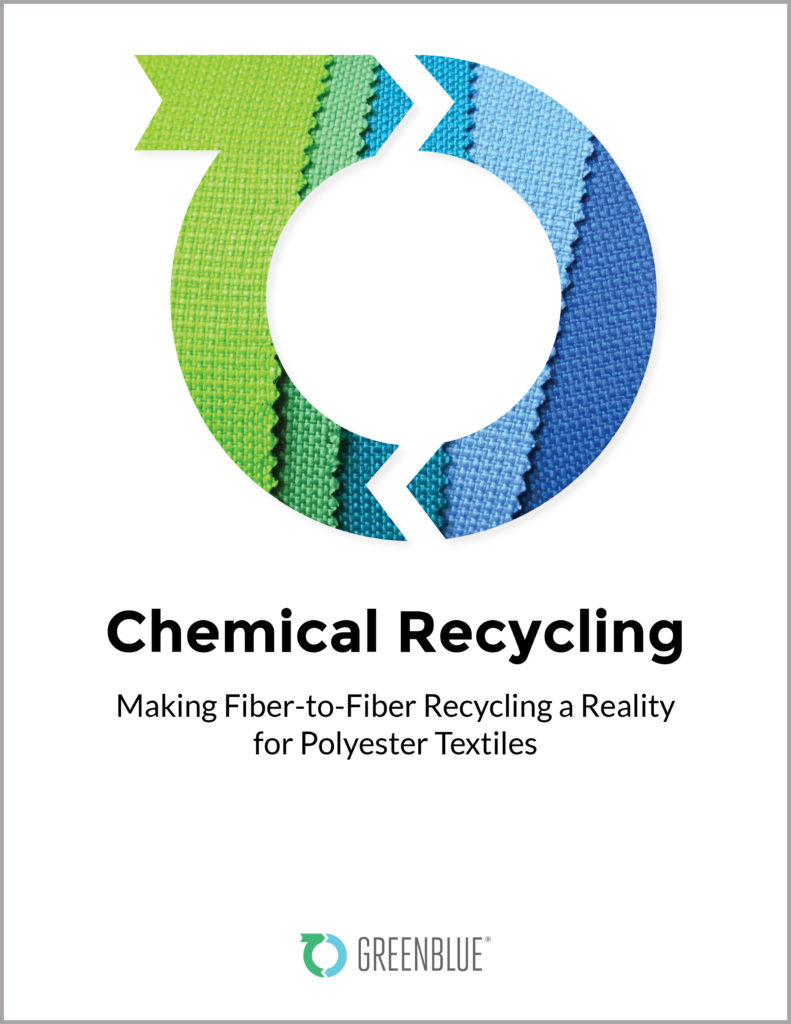Chemical Recycling: Making Fiber-to-Fiber Recycling A Reality for Polyester Textiles
 Polyethylene terephthalate (PET)* is one of the most commercially significant polymers in the global materials economy. People are most familiar with their daily use of PET for rigid containers such as beverage bottles, pre-washed salad tubs, deli take-out containers, etc. Use of PET for various packaging applications has increased dramatically in the last 20 years, and compared to other commonly used resins it has a fairly robust collection and recycling infrastructure as well as established end markets to purchase recycled resin.
Polyethylene terephthalate (PET)* is one of the most commercially significant polymers in the global materials economy. People are most familiar with their daily use of PET for rigid containers such as beverage bottles, pre-washed salad tubs, deli take-out containers, etc. Use of PET for various packaging applications has increased dramatically in the last 20 years, and compared to other commonly used resins it has a fairly robust collection and recycling infrastructure as well as established end markets to purchase recycled resin.
But consumers also use PET in numerous other ways that may be less familiar to them, such as sportswear and fashion apparel; automotive interiors; textiles for office, home, hotel and hospital furnishings; carpets; insulation; and tires. In fact, the volume of PET flowing through the global economy is much greater for the production of fibers, yarns, and woven and non-woven fabrics than it is for packaging, films and other rigid applications.
However, despite the ubiquity and importance of PET textiles in the global economy, most of the goods produced eventually are incinerated or end up in landfills due to the lack of an infrastructure for keeping them in circulation to create materials for future products.
GreenBlue conducted research to explore how we might create a more effective infrastructure for collecting and recycling PET textiles. This report examines the opportunities and challenges of recycling pre and post-consumer PET textiles in the context of four industry sectors: apparel, contract textiles, carpet, and contract office furniture. New technologies for chemical recycling are emerging that could significantly increase the amount of PET textiles we are able to recycle into high quality, if not virgin quality, raw materials. The report includes information about five companies with different technologies for chemically transforming PET textiles into valuable end products. It also includes “feature” stories about companies and organizations that have developed strategies and innovative products and services for keeping PET textiles in circulation based on reuse or more traditional methods of recycling to produce high quality goods.
GreenBlue collected data from selected manufacturers in an attempt to represent the potential quantities of pre-consumer PET textile waste that might be available from each sector as well as information about the revenue earned from the sale of textile waste to recyclers. The report also includes a discussion of the benefits and constraints of open and closed-loop systems, noting the advantages that chemical recycling may offer for building an efficient and effective open-loop system for circulating all types of PET materials (see “Eastern U.S. PET Wasteshed” map below).
*Note: The term “PET” is used throughout this report to reference both rigid and fiber applications of the polymer. Typically, packaging and other rigid applications are referred to as “PET” and fiber, yarn, fabric or textiles are referred to as “polyester.”
PET Wasteshed Map
Map does not include all manufacturing facilities within this region. GreenBlue did not verify that all facilities generate PET waste. Location data for MRFs was not available for the northeastern U.S. Sources for location data for facilities was obtained from internet searches, Carpet America Recovery Effort (CARE), the International Textile Alliance (ITA), the Association for Contract Textiles (ACT), and the Southeast Recycling Development Council (SERDC).
PET Chemical Recycling Technologies

Company Features

